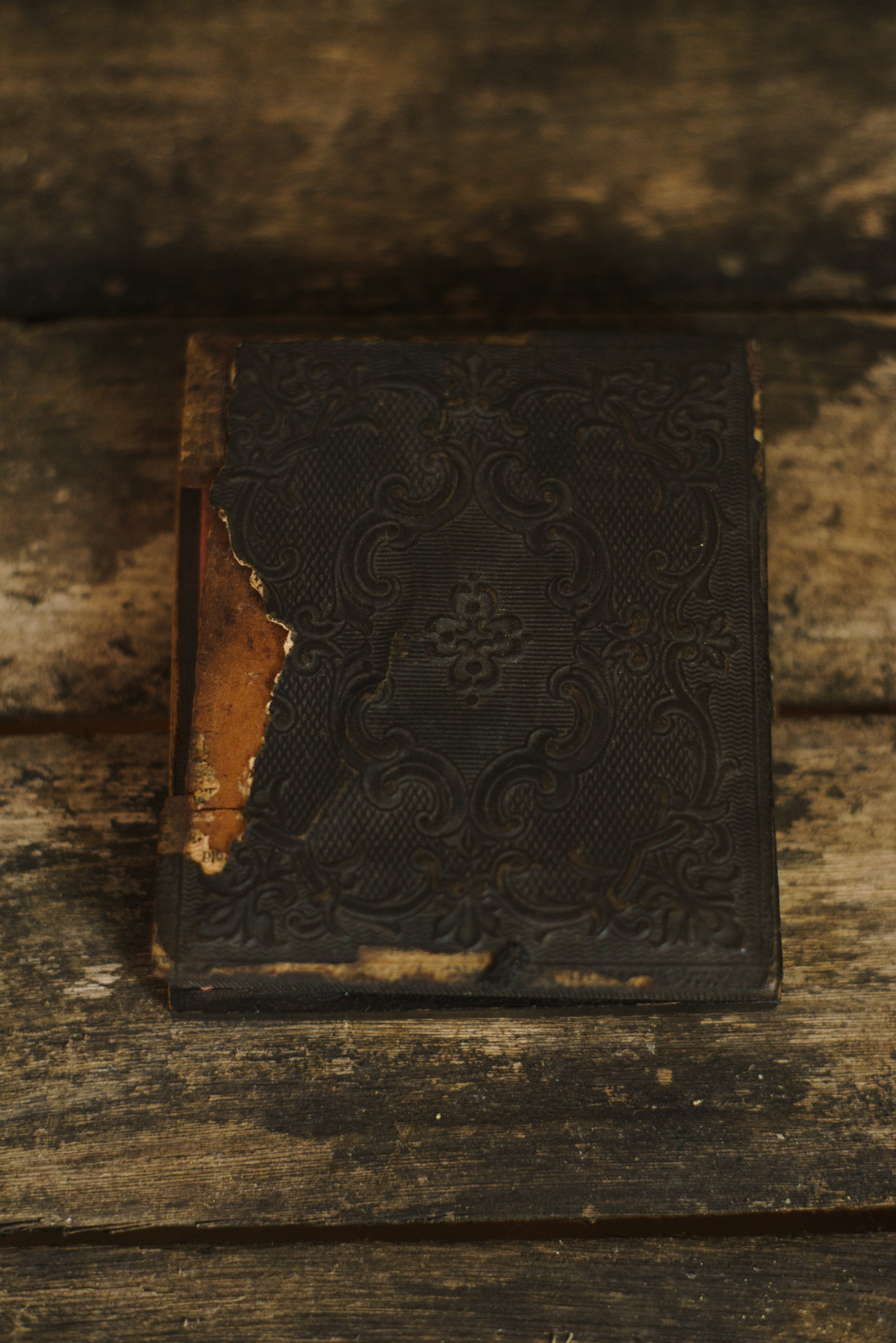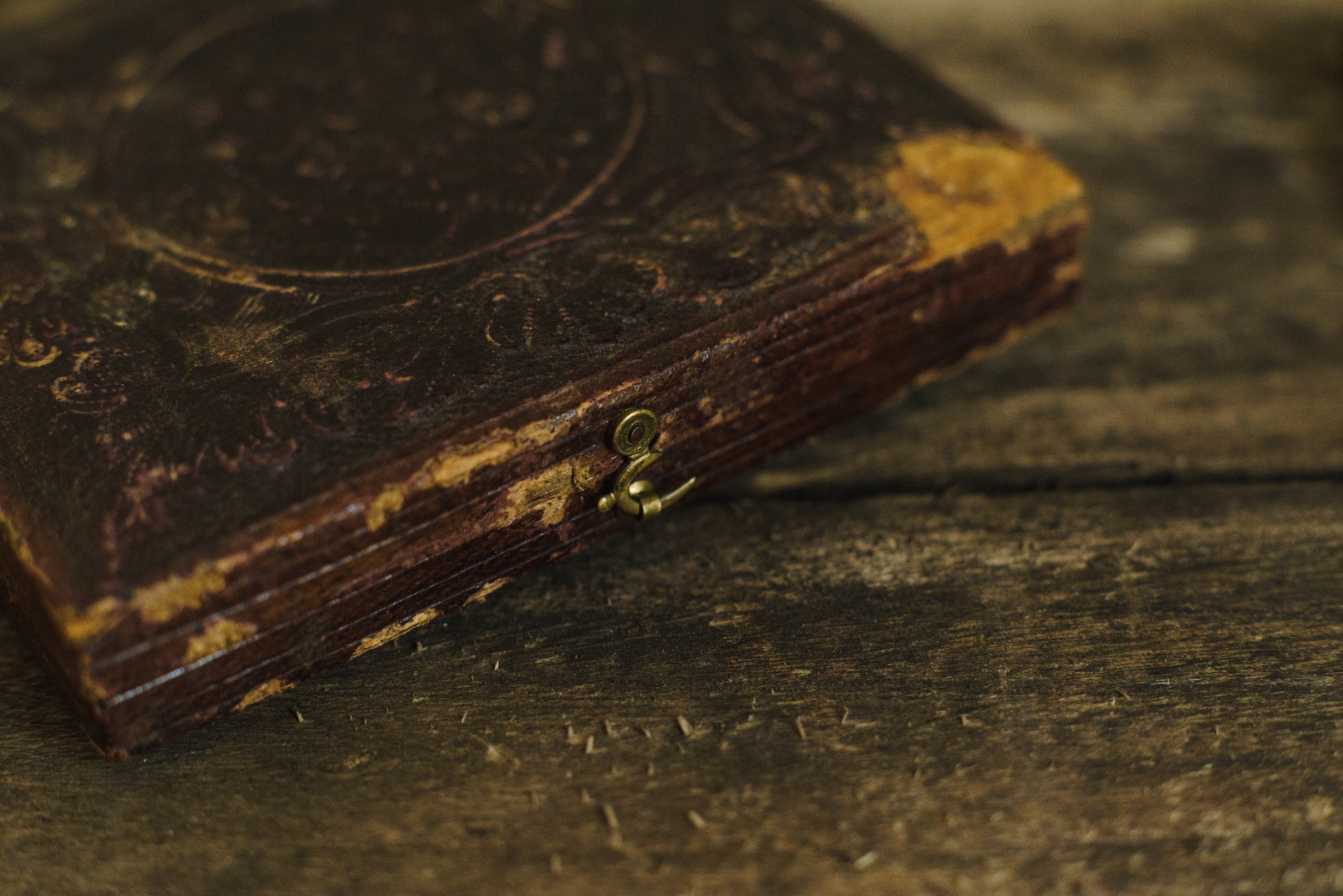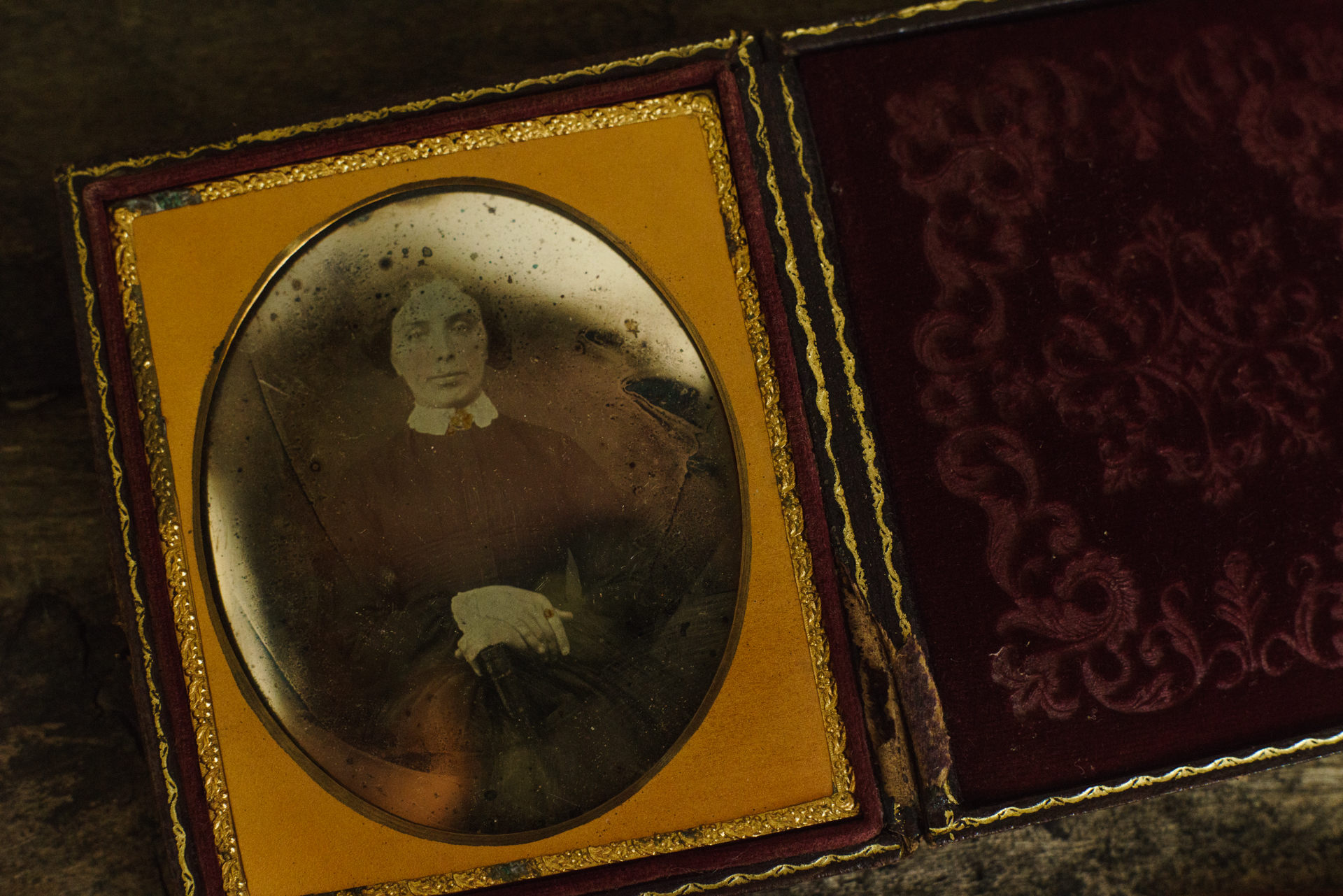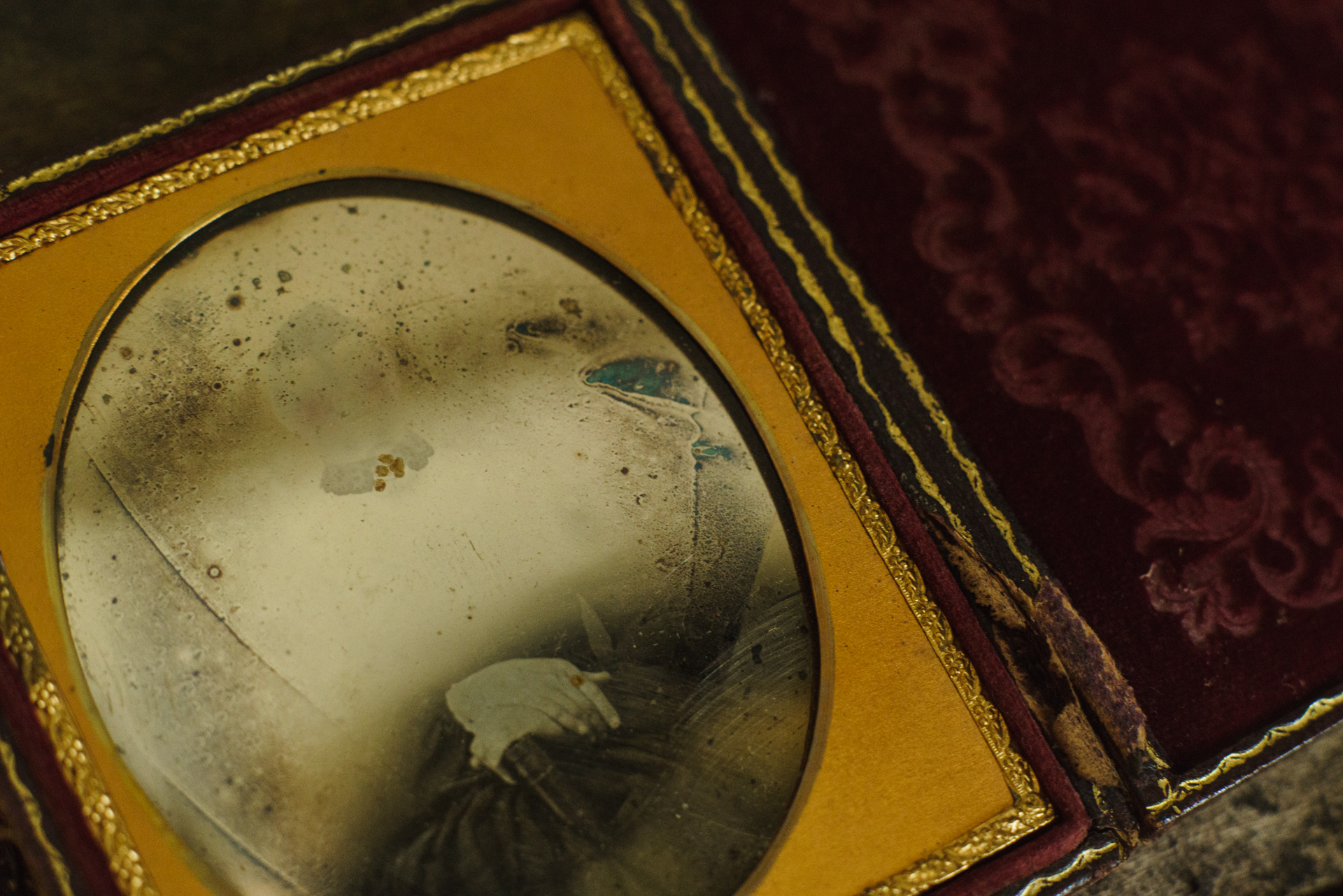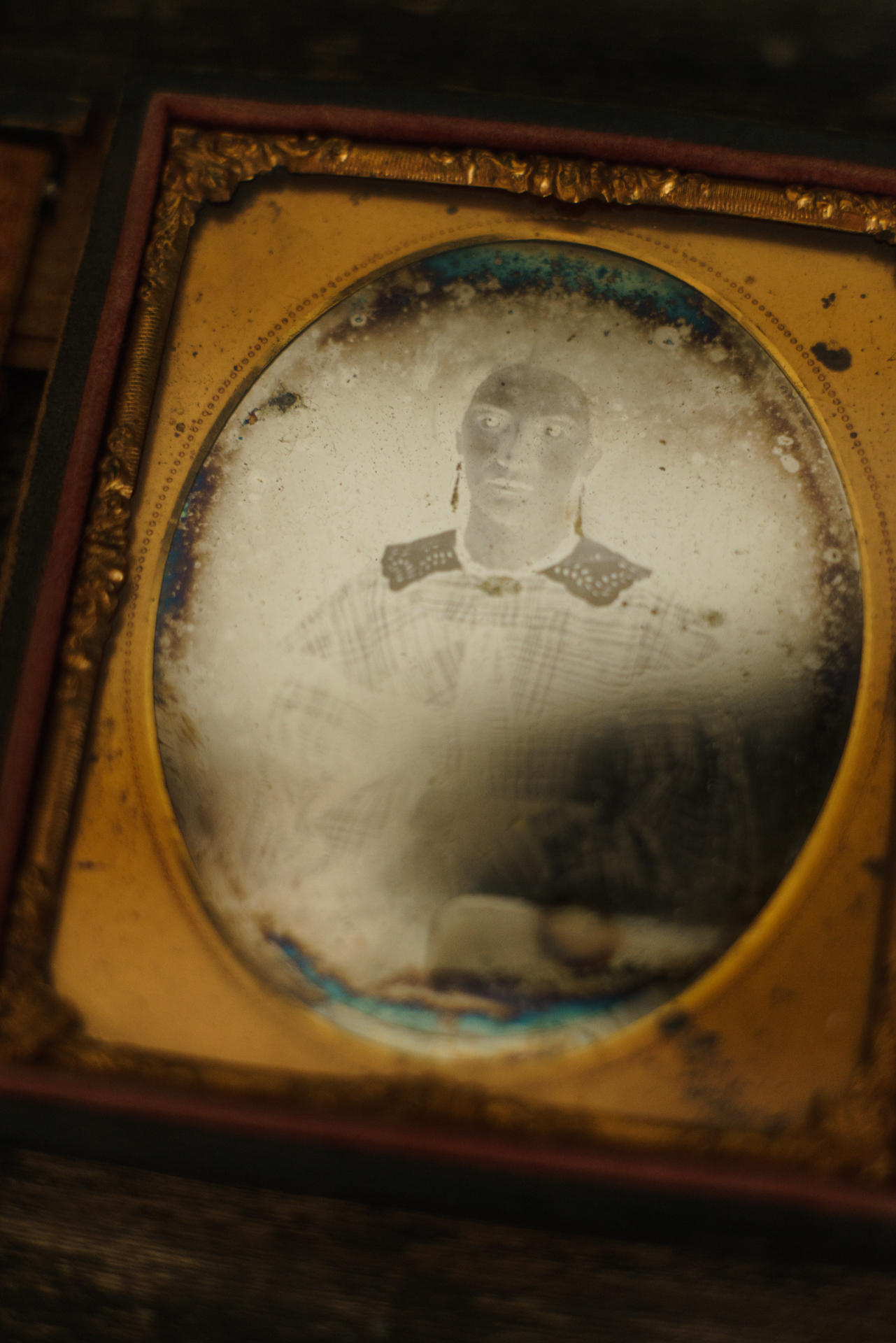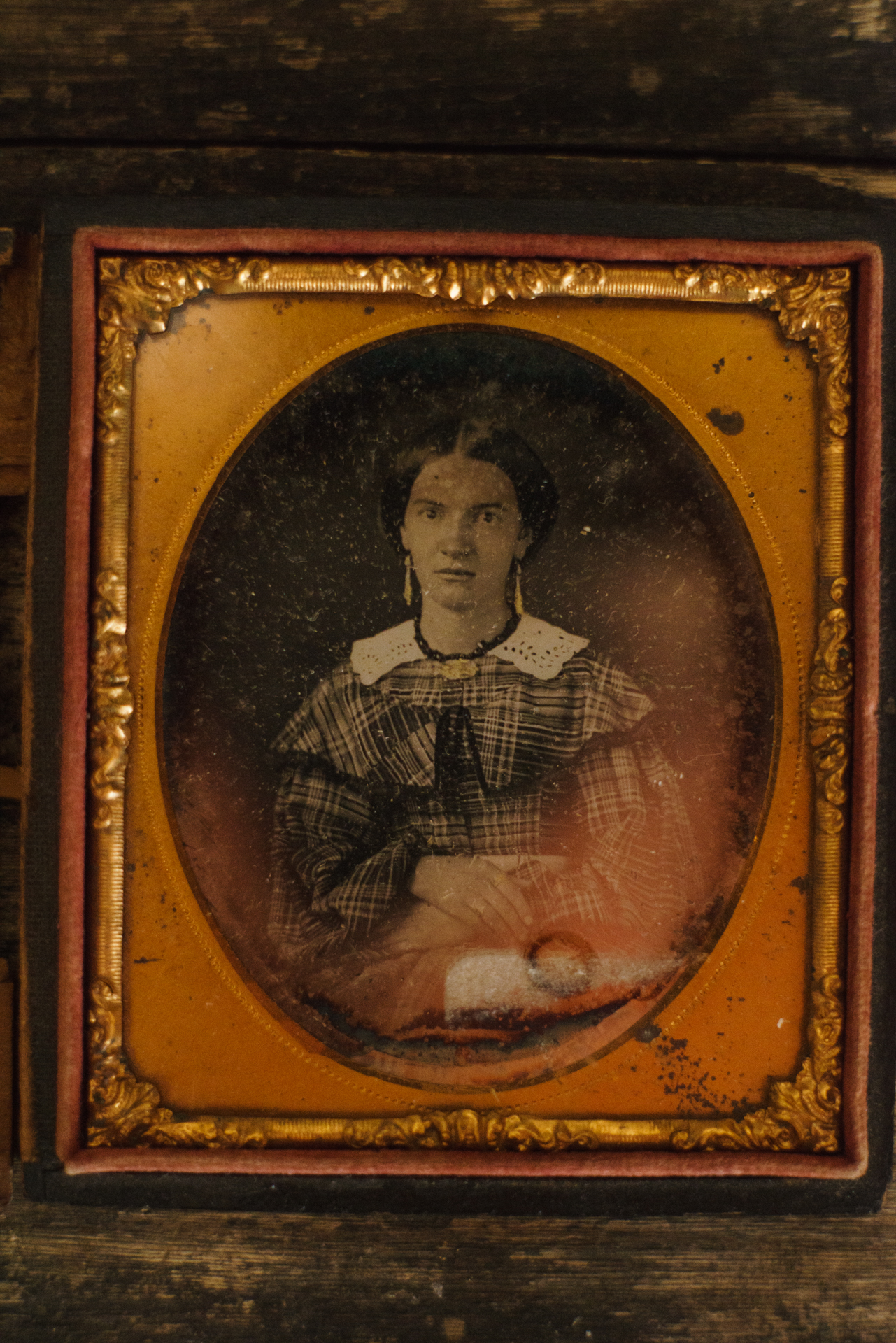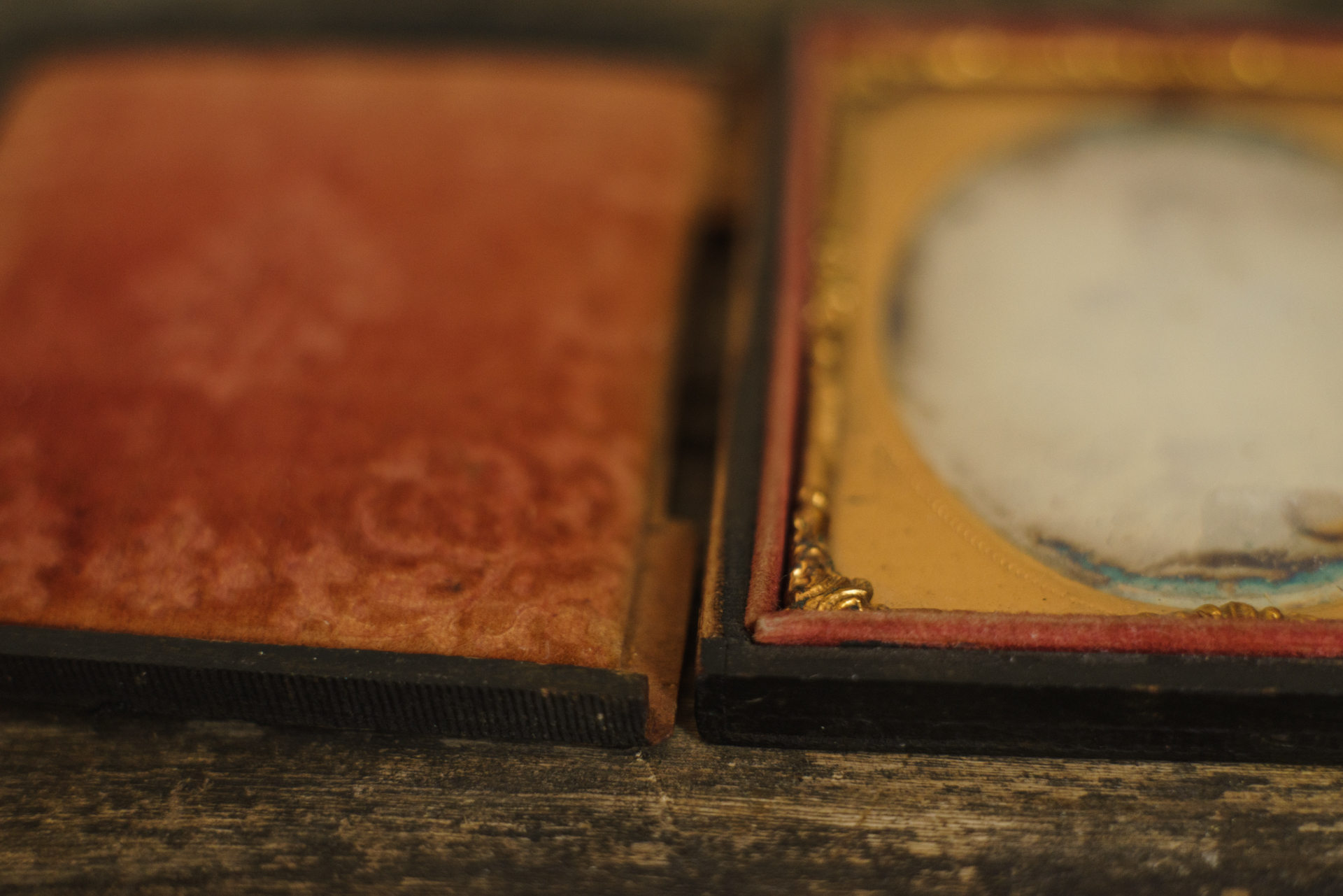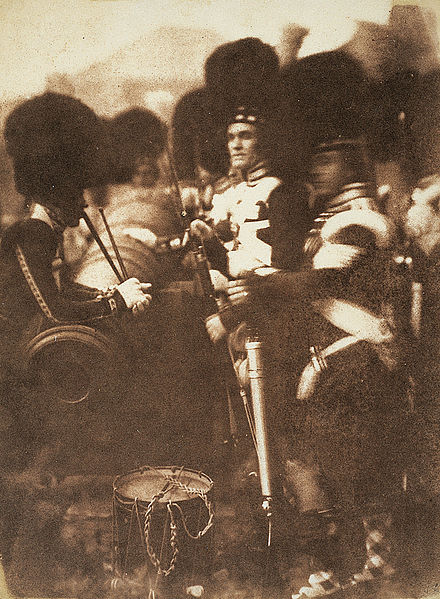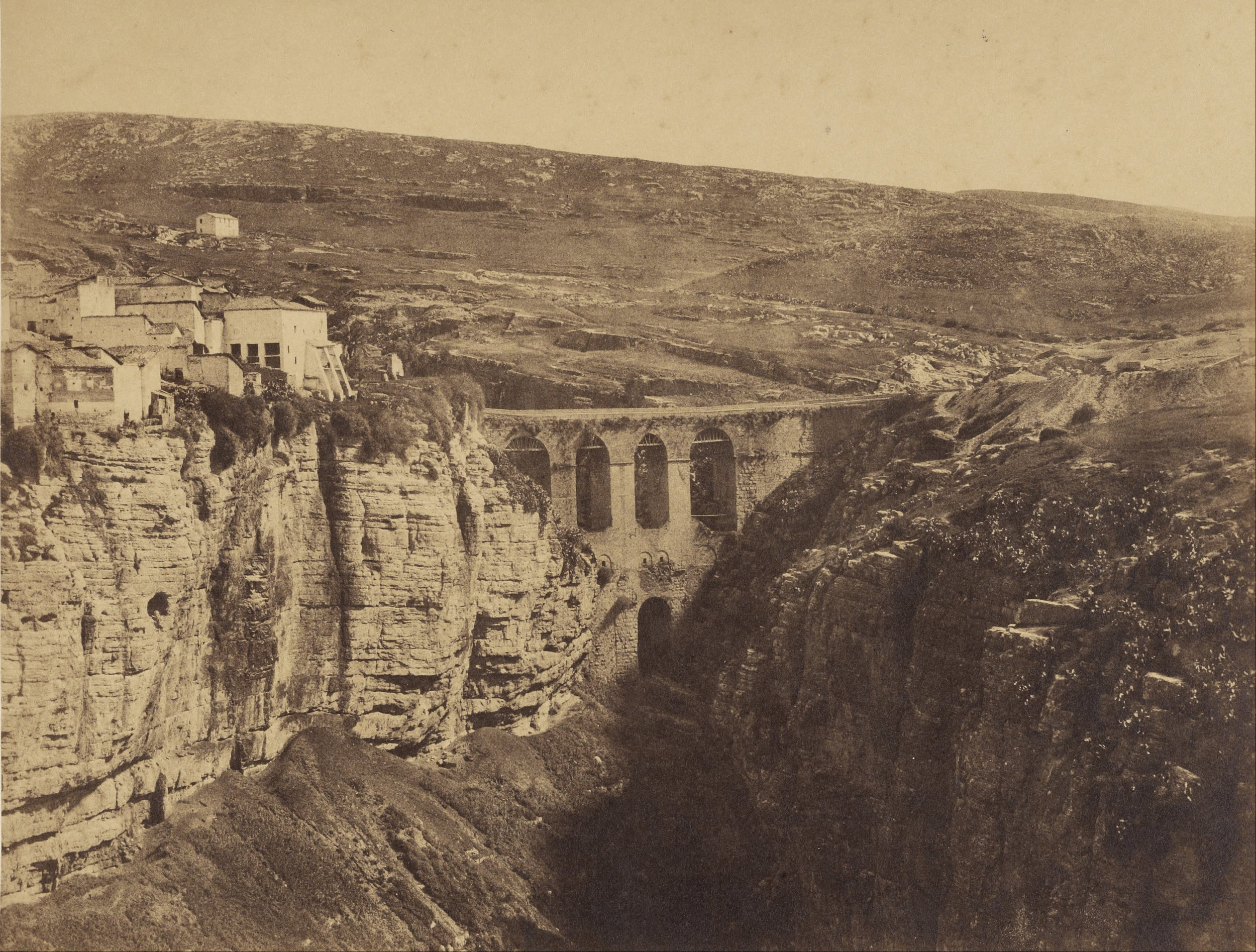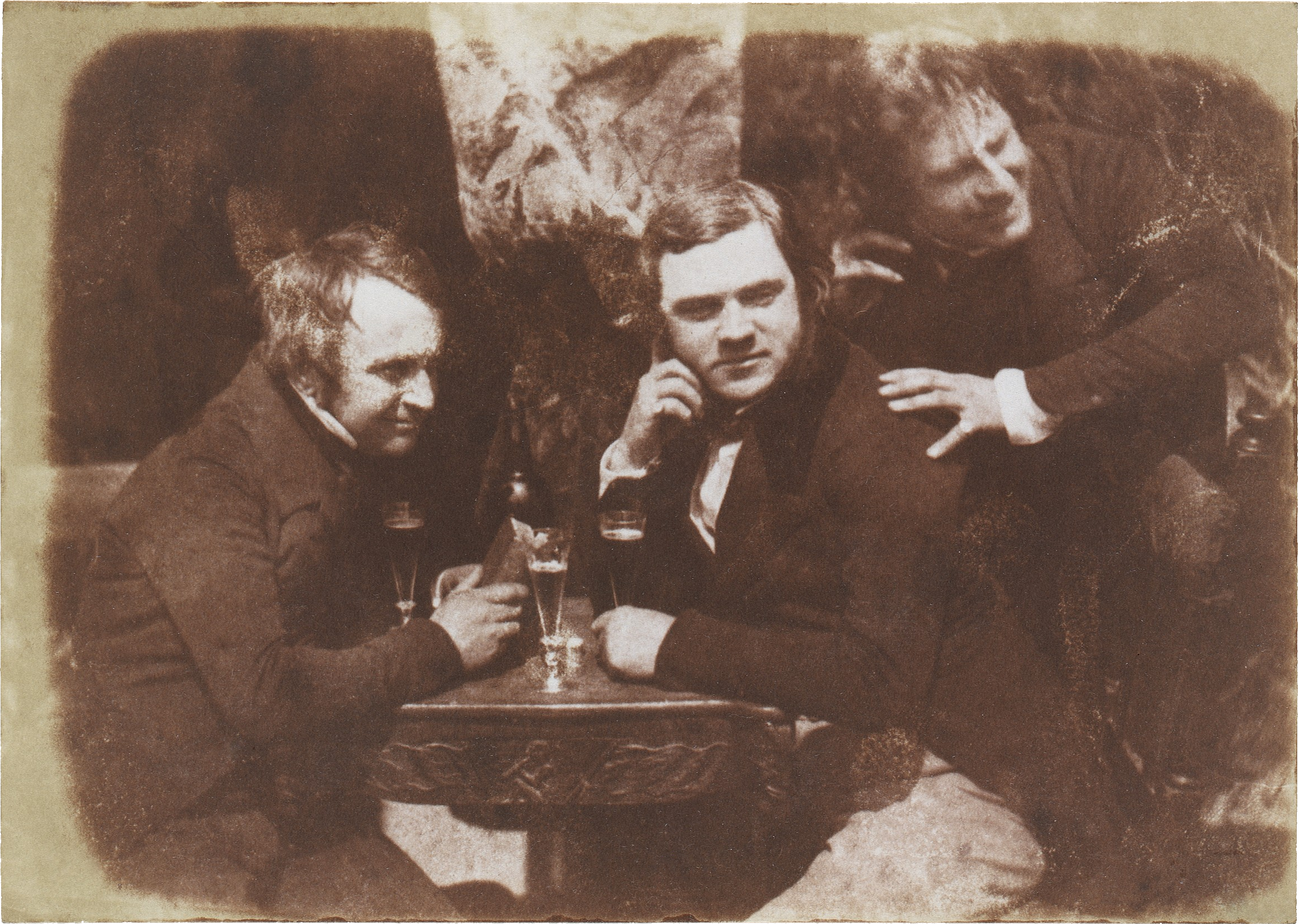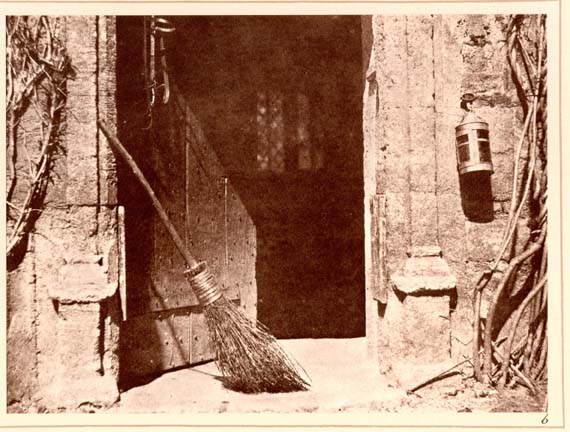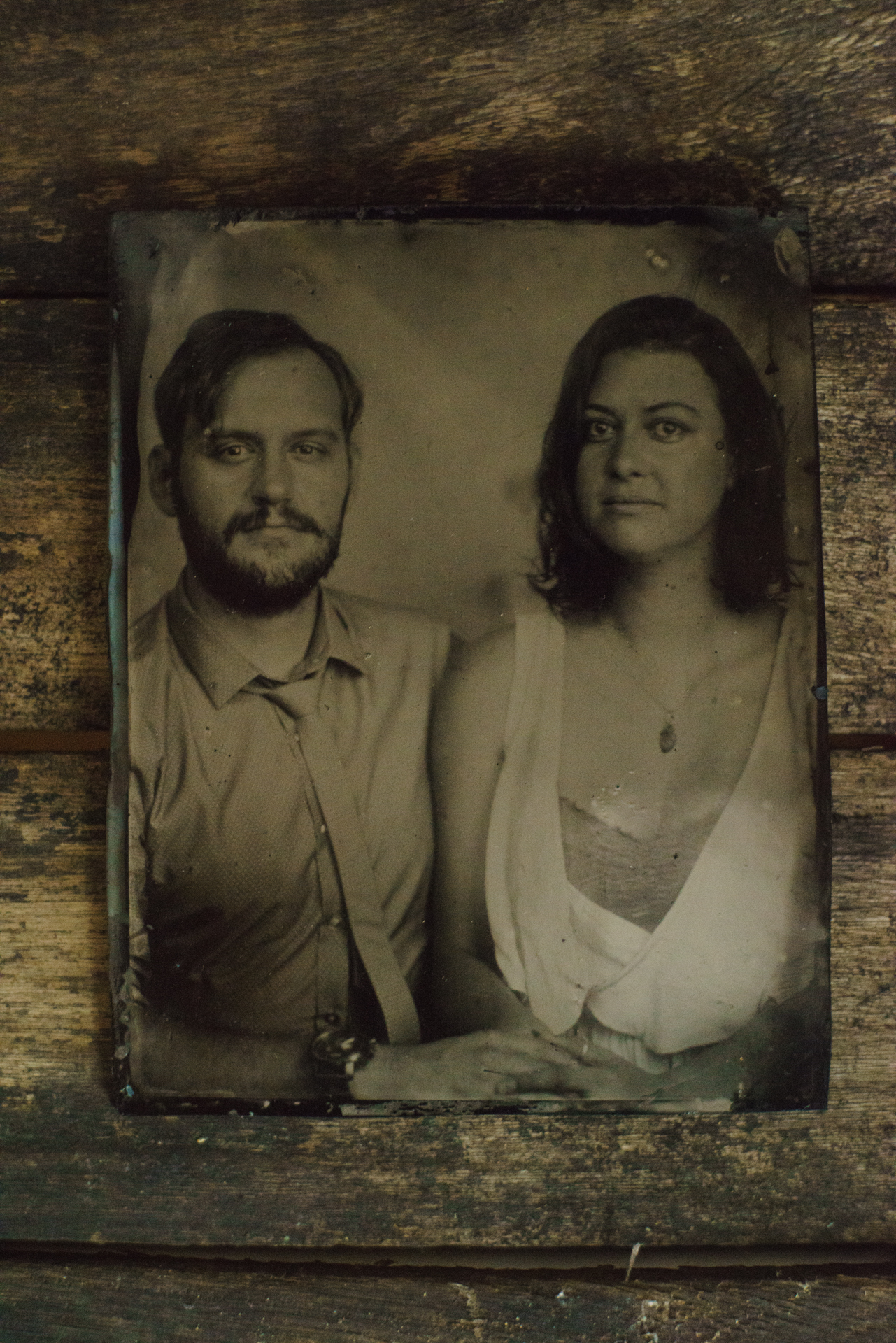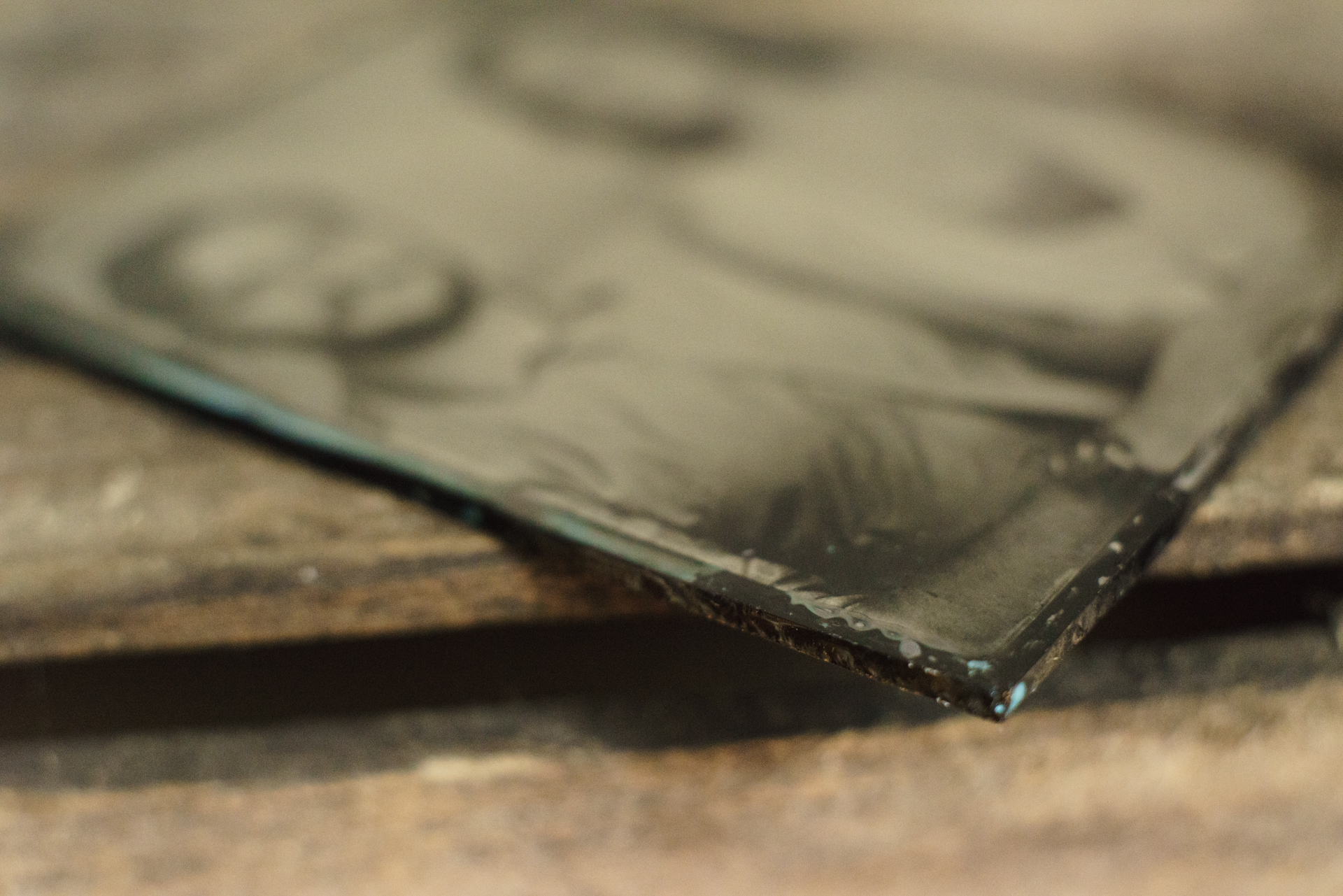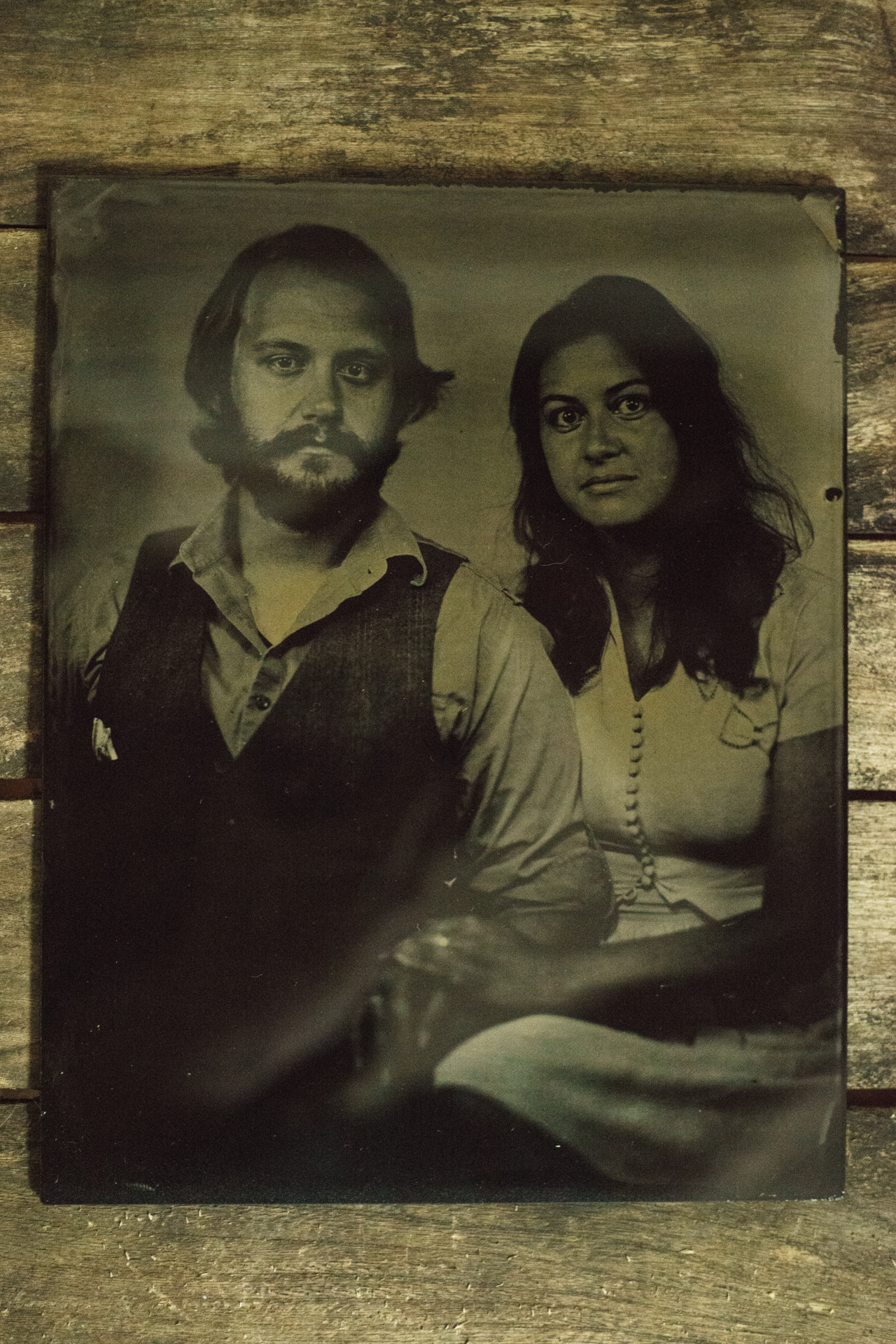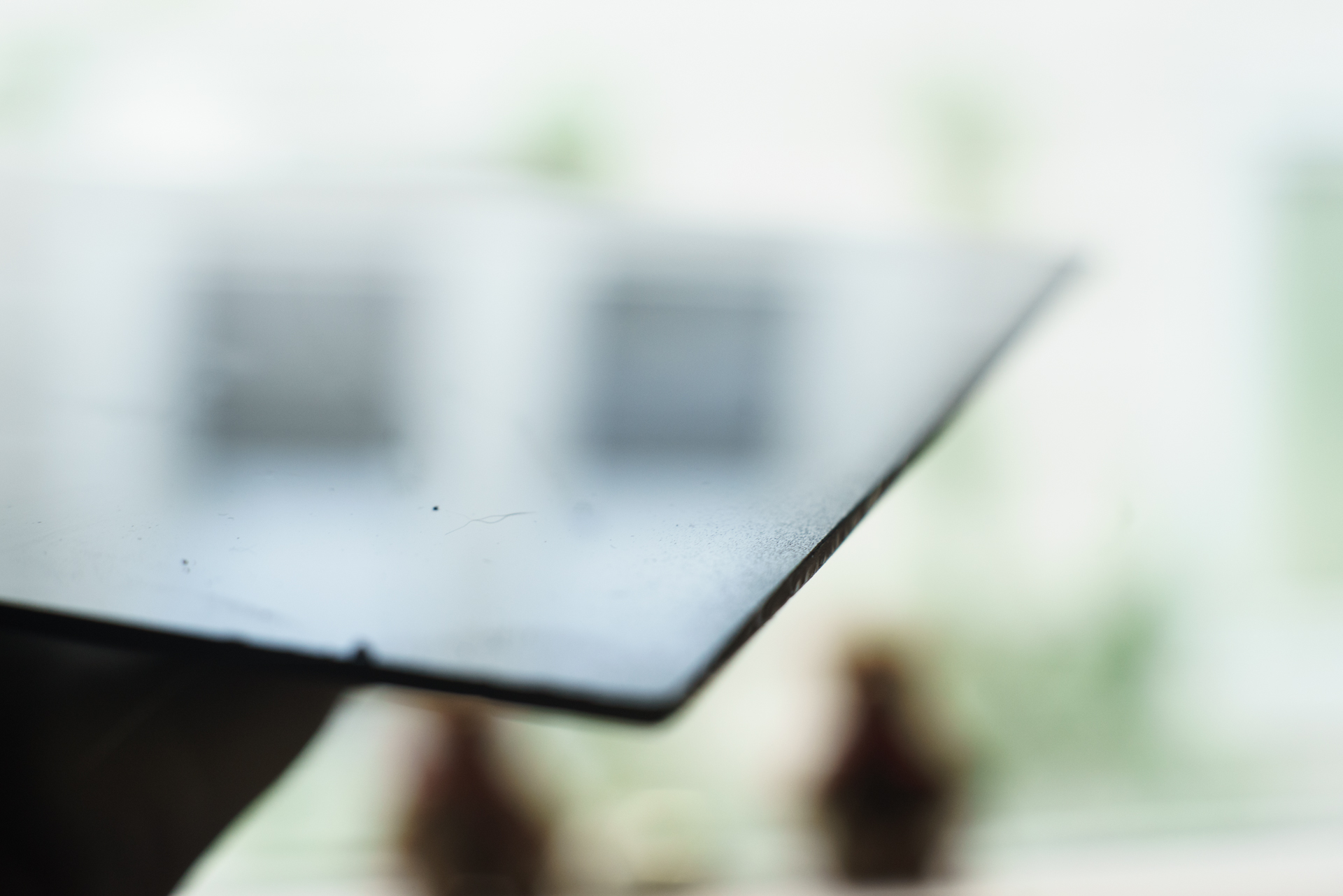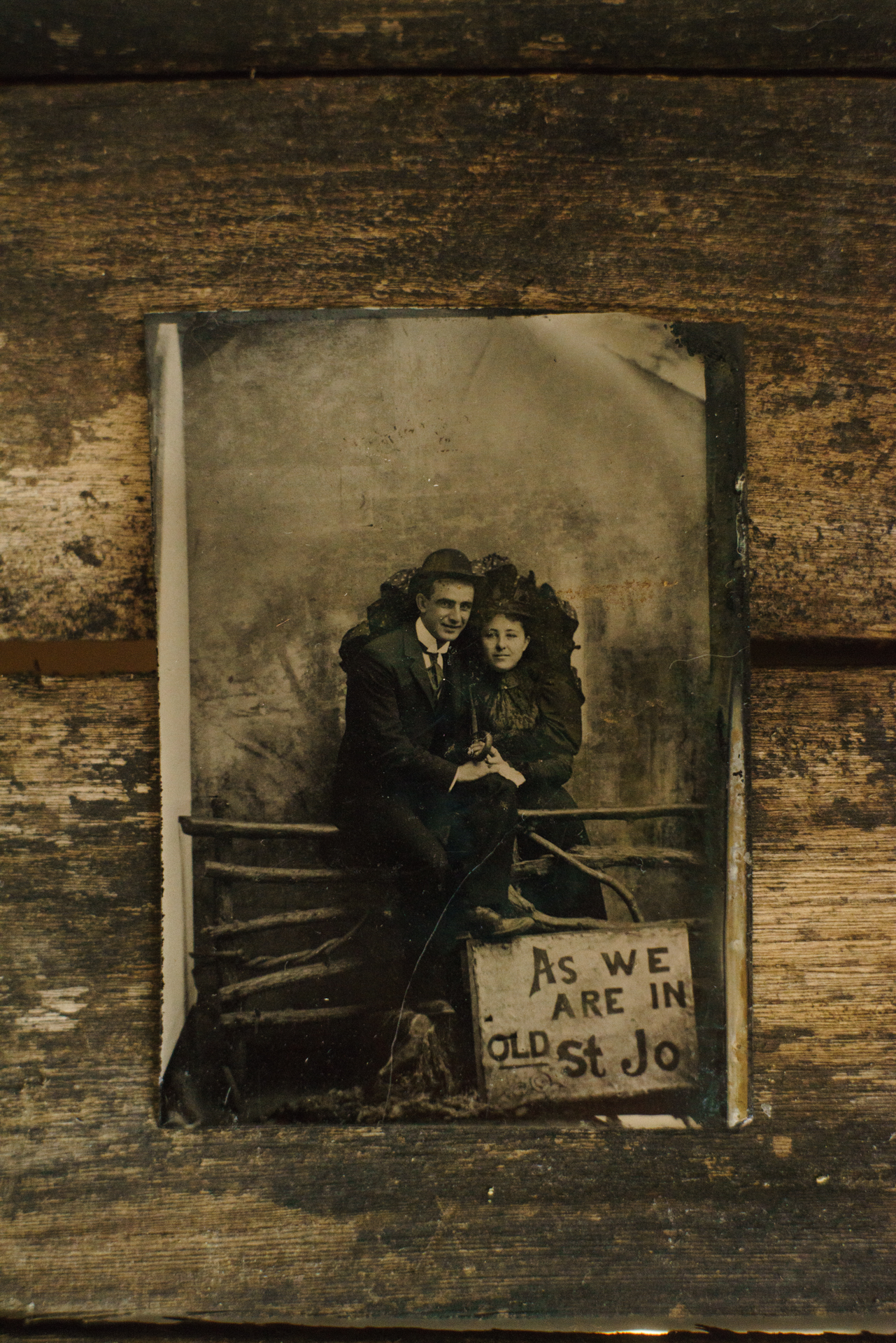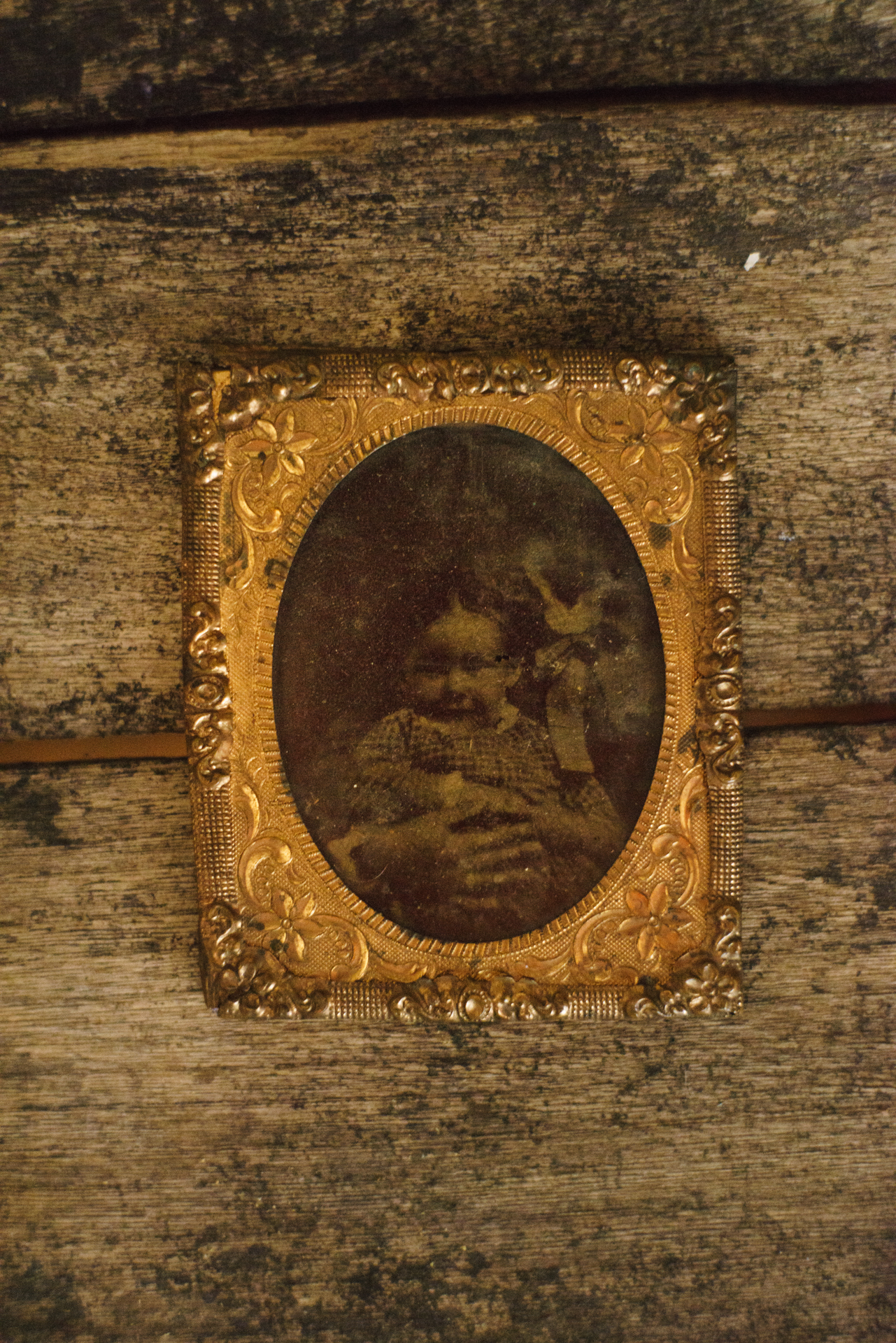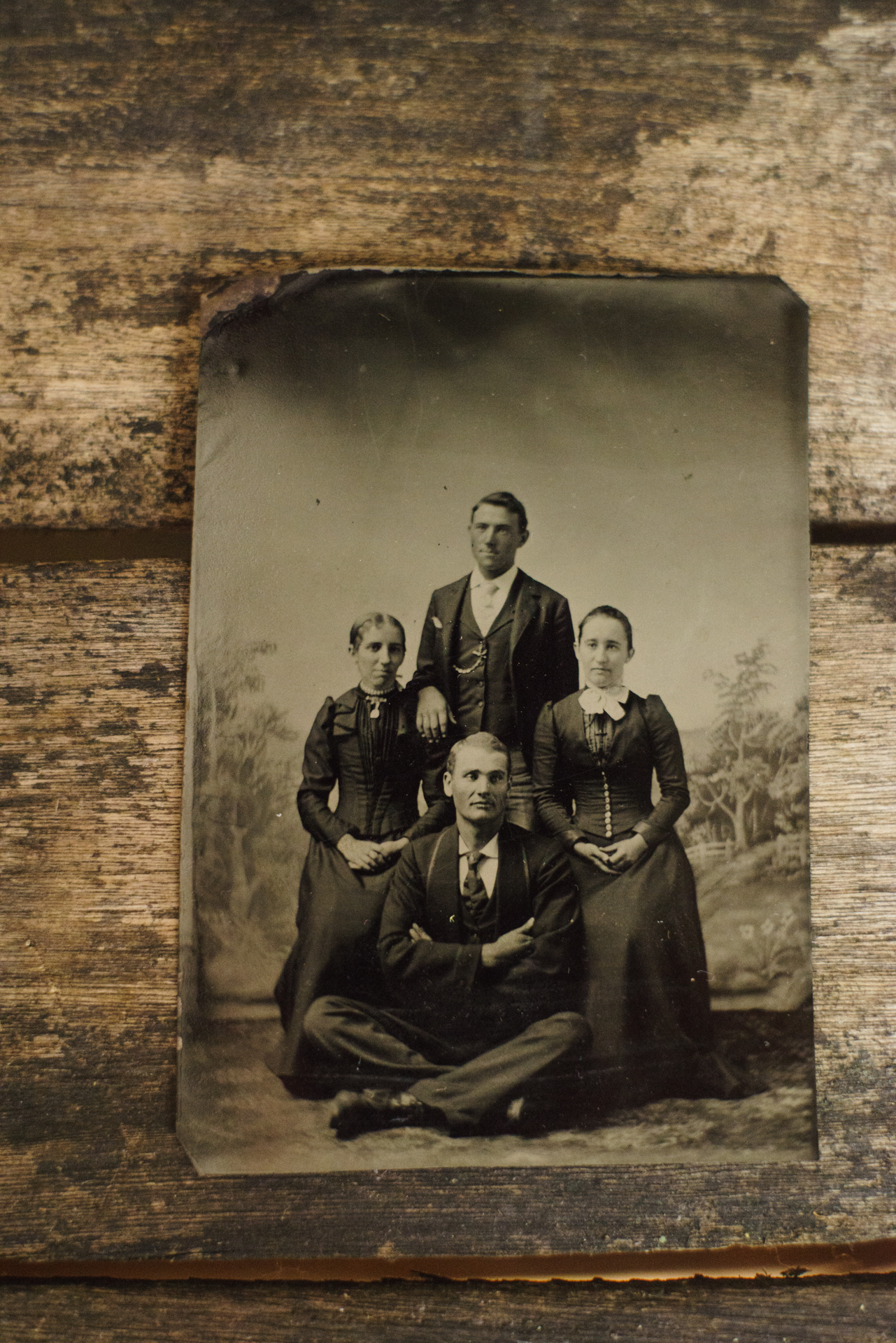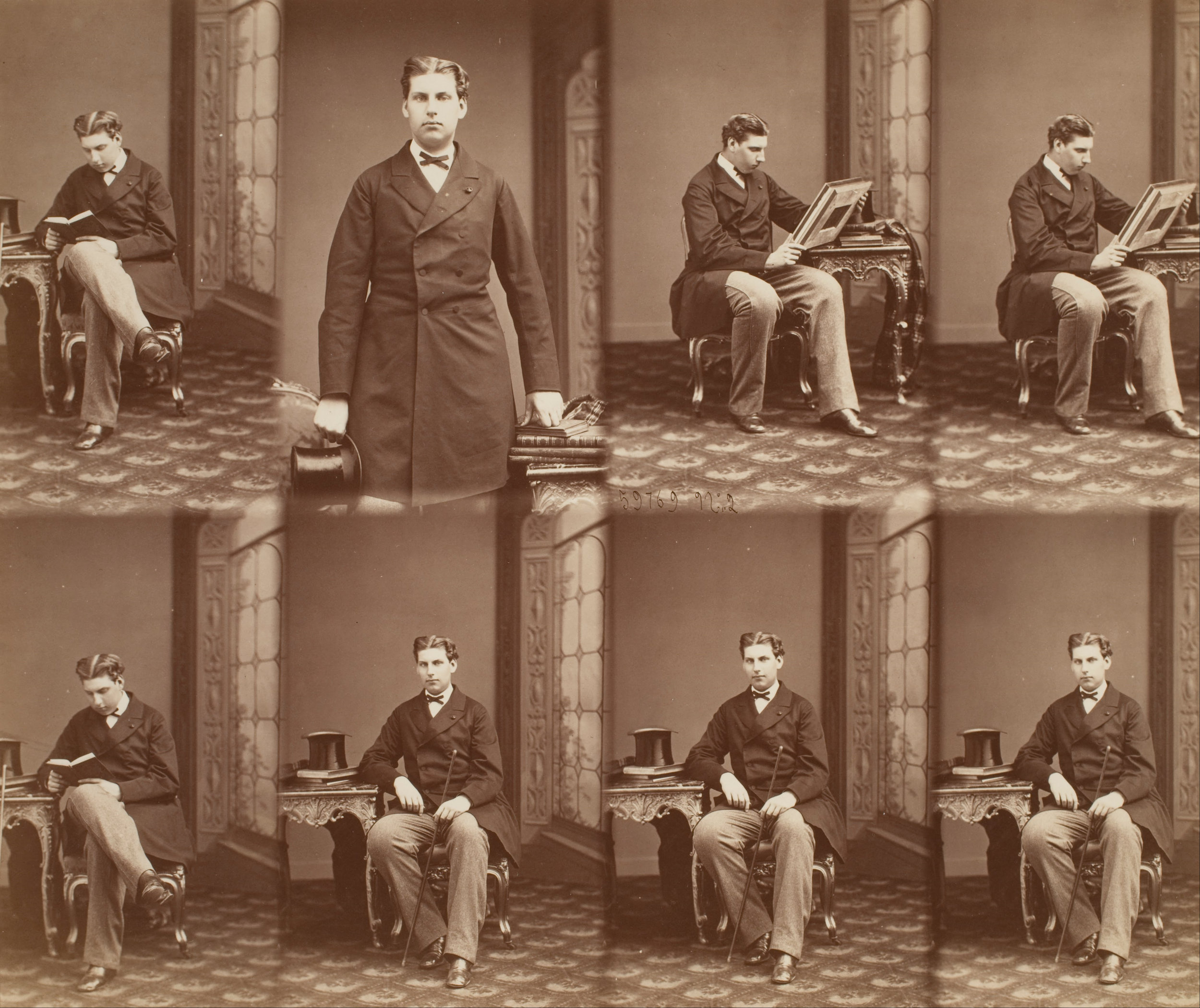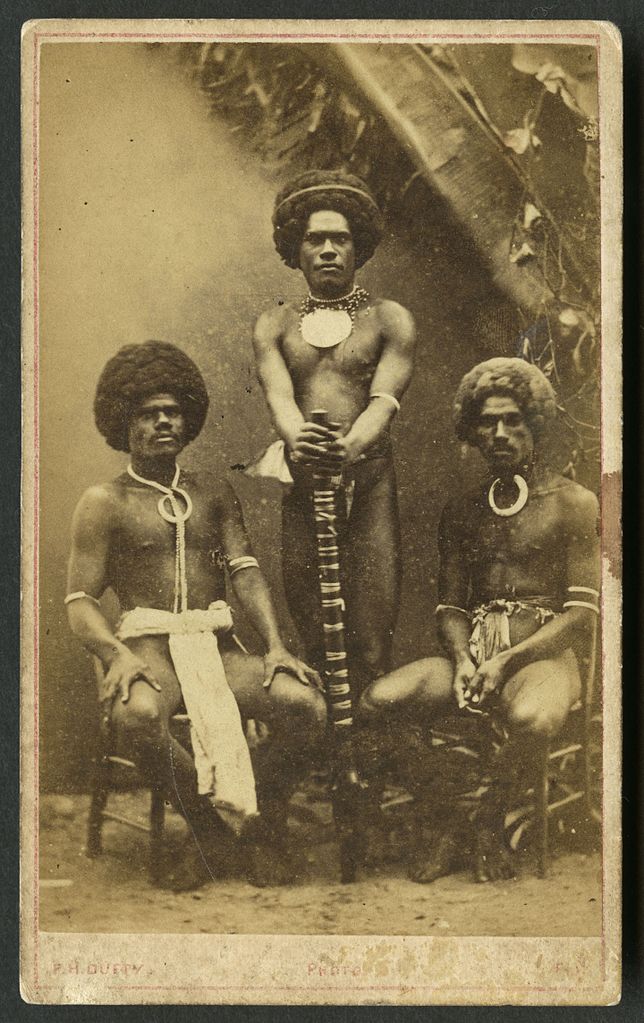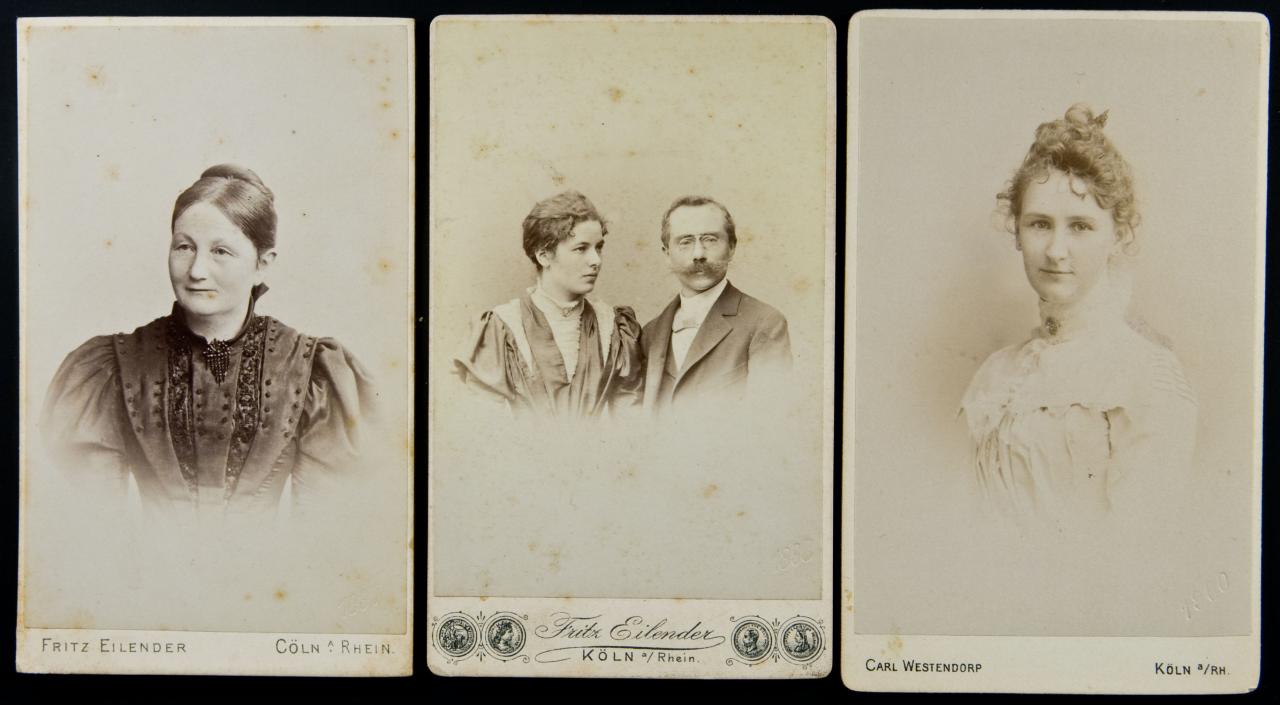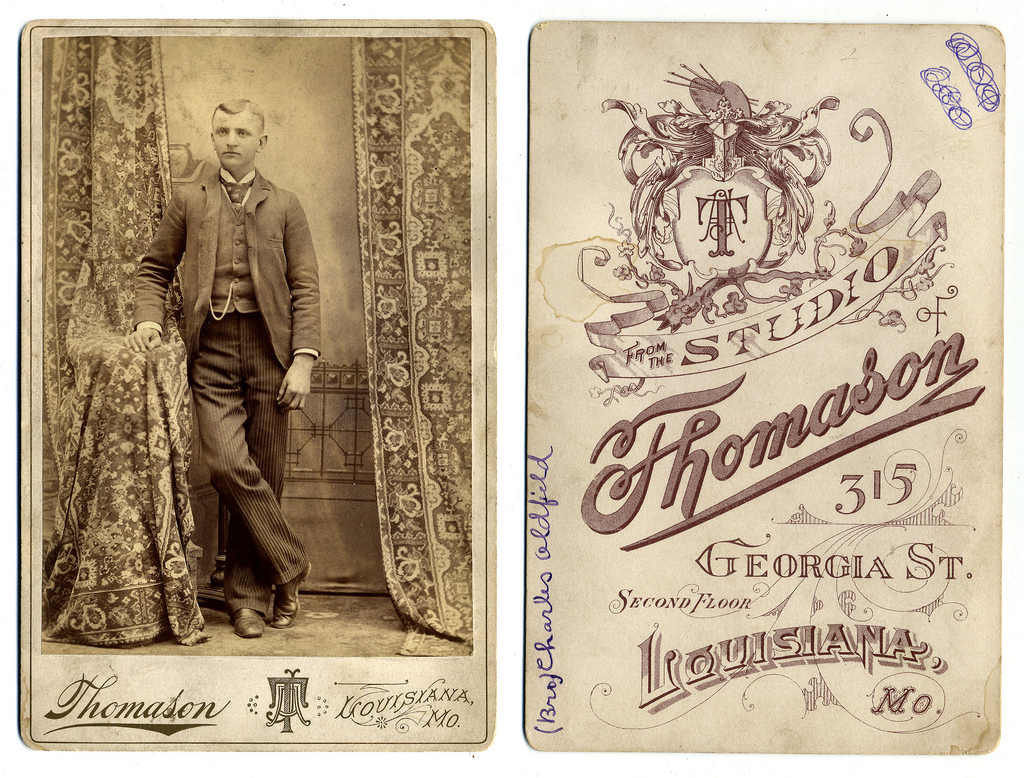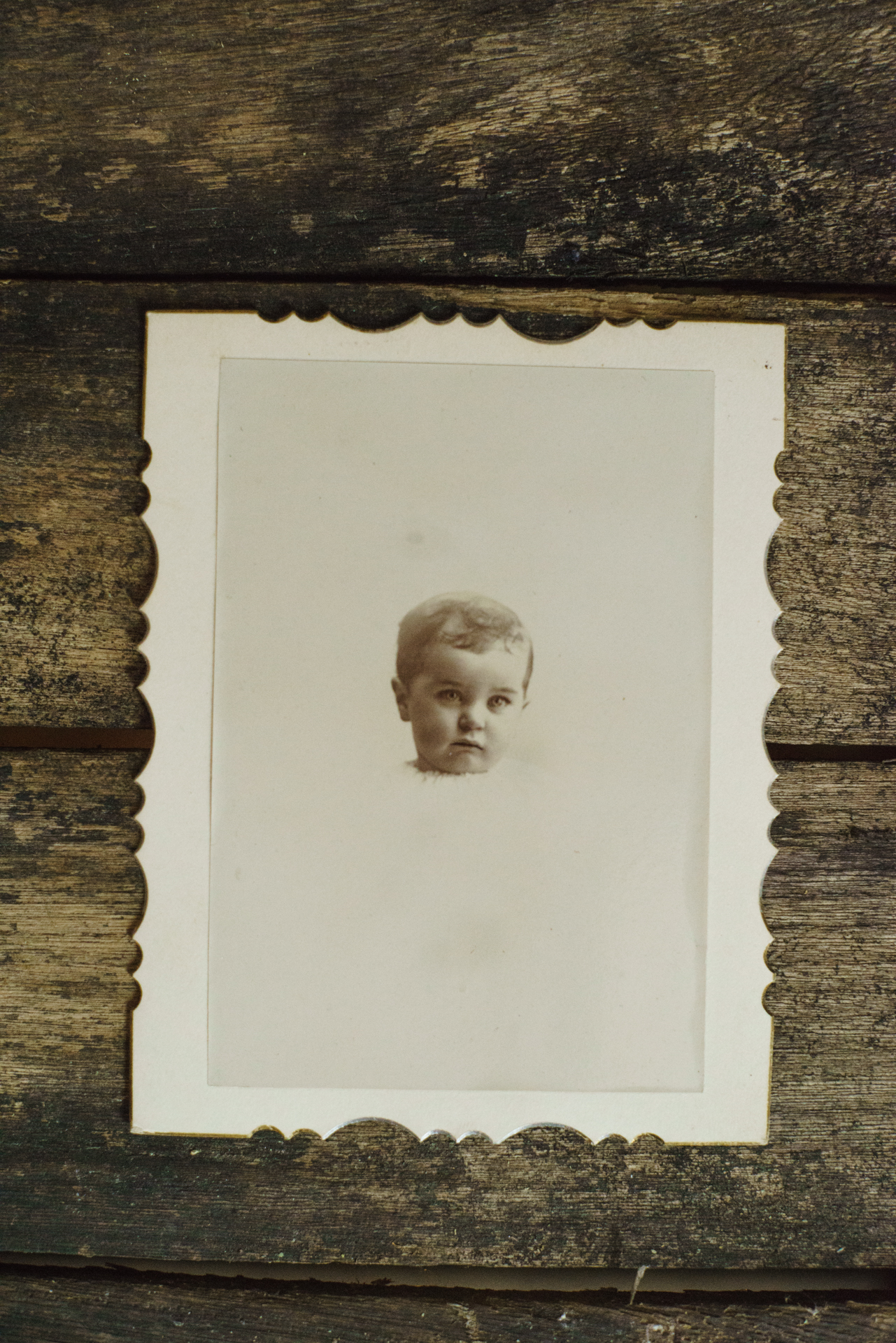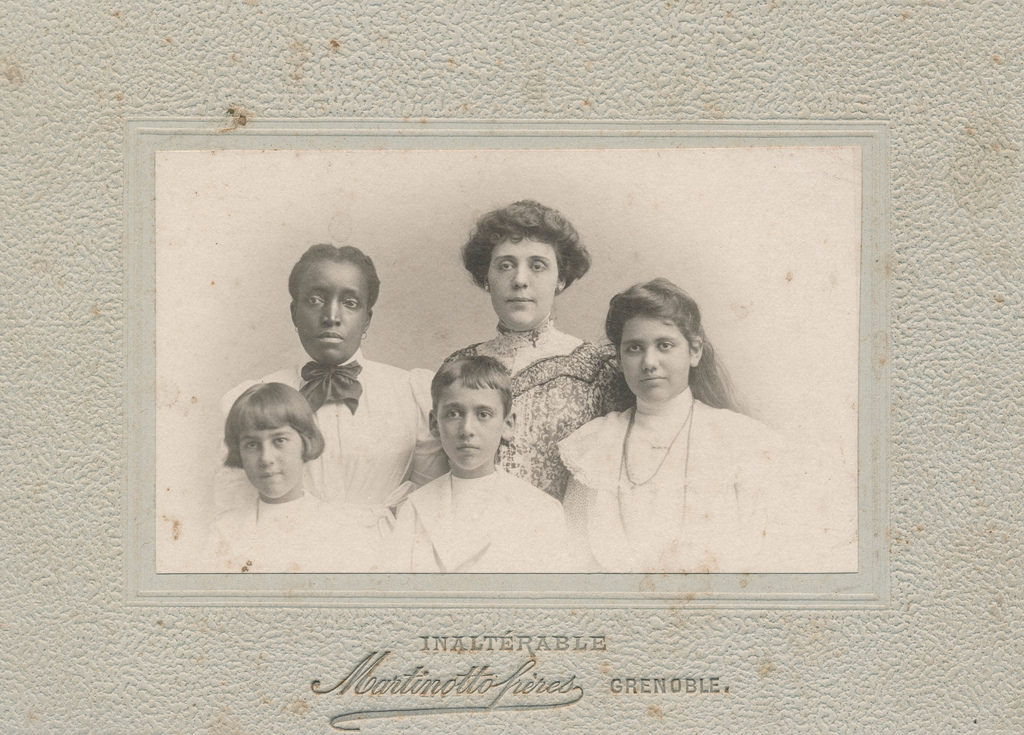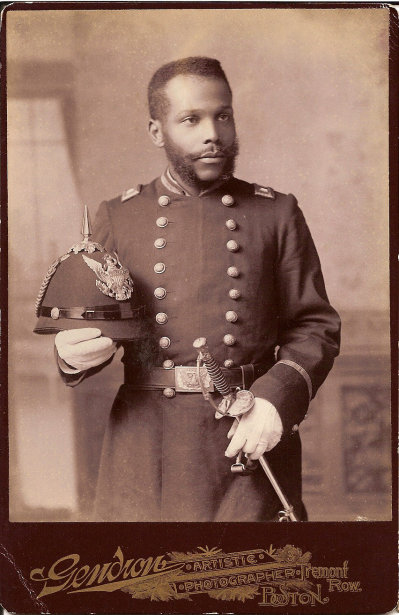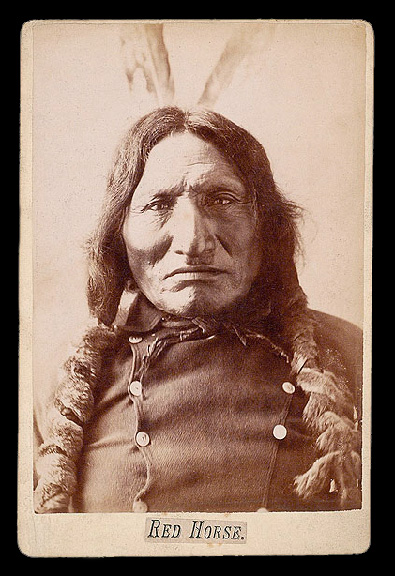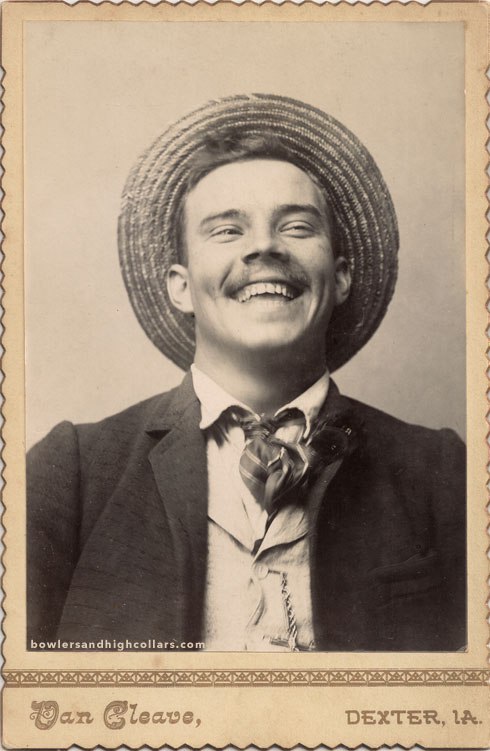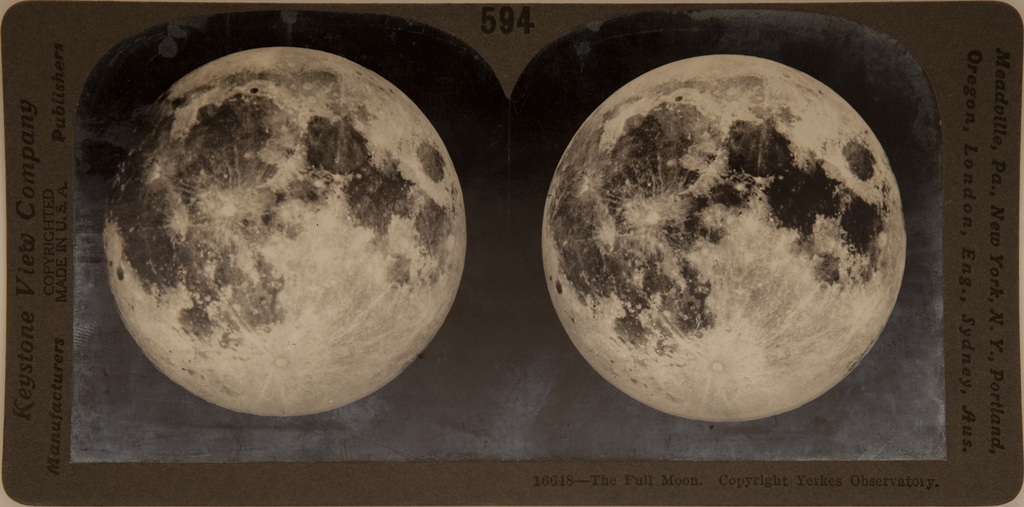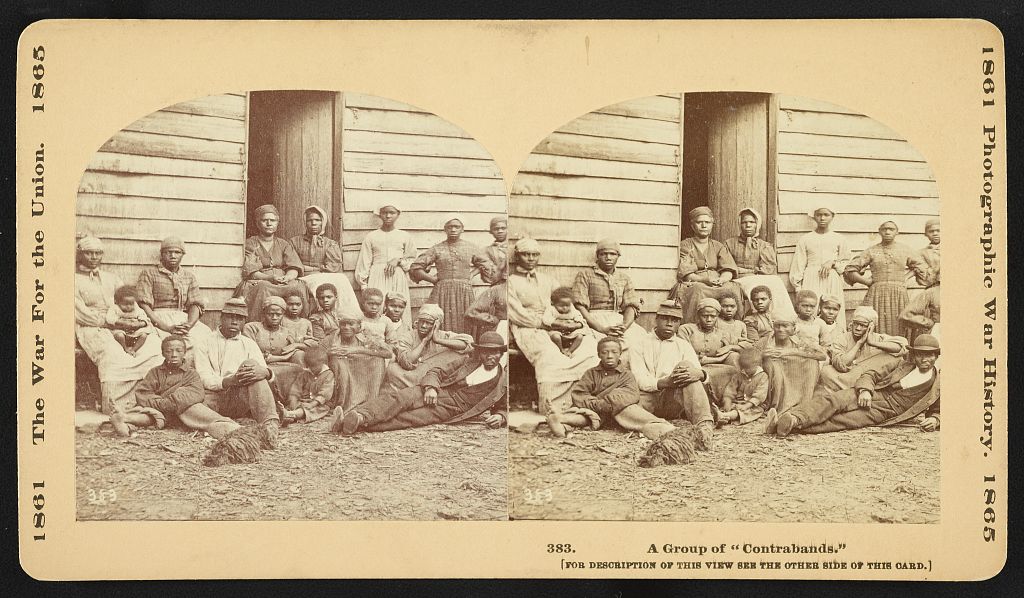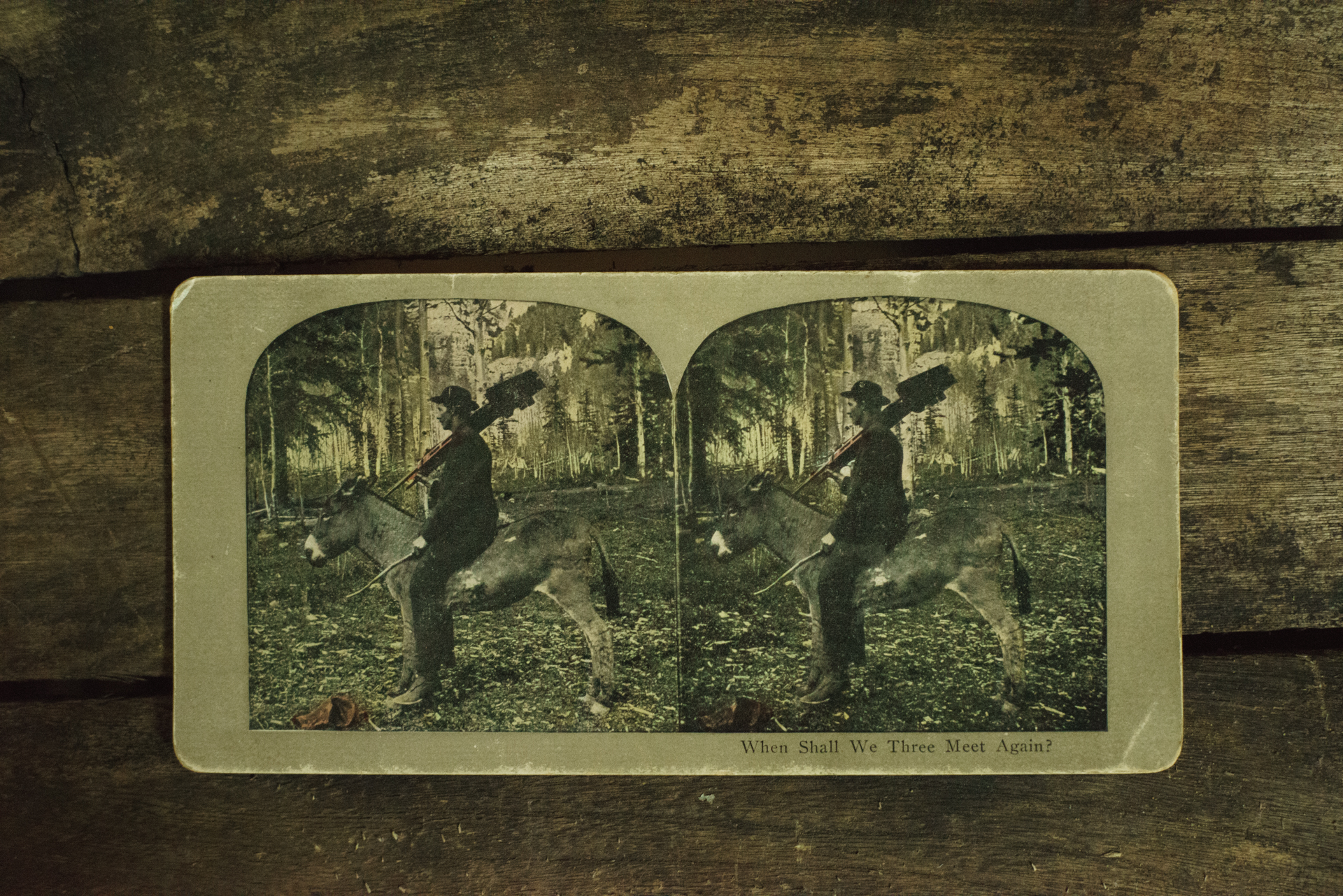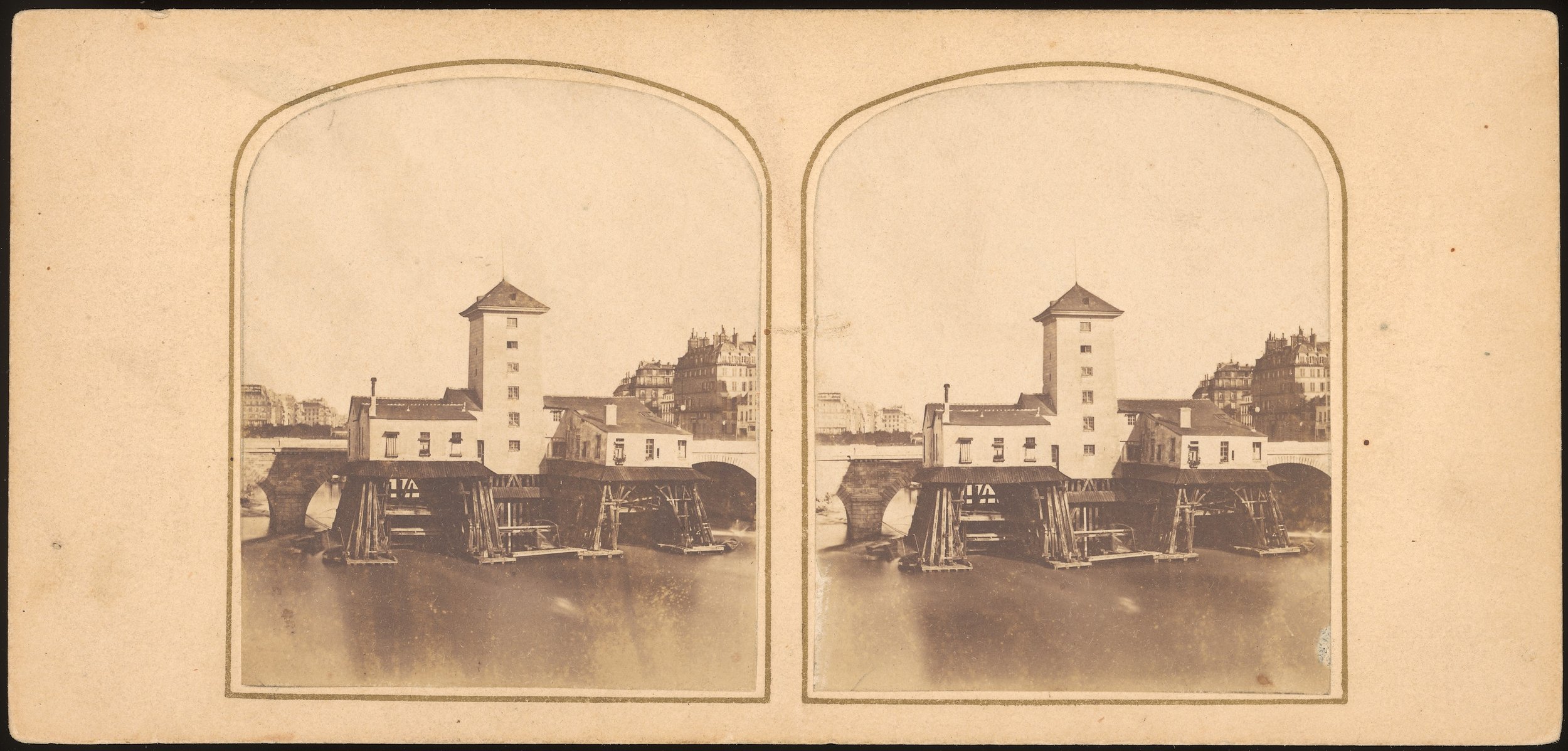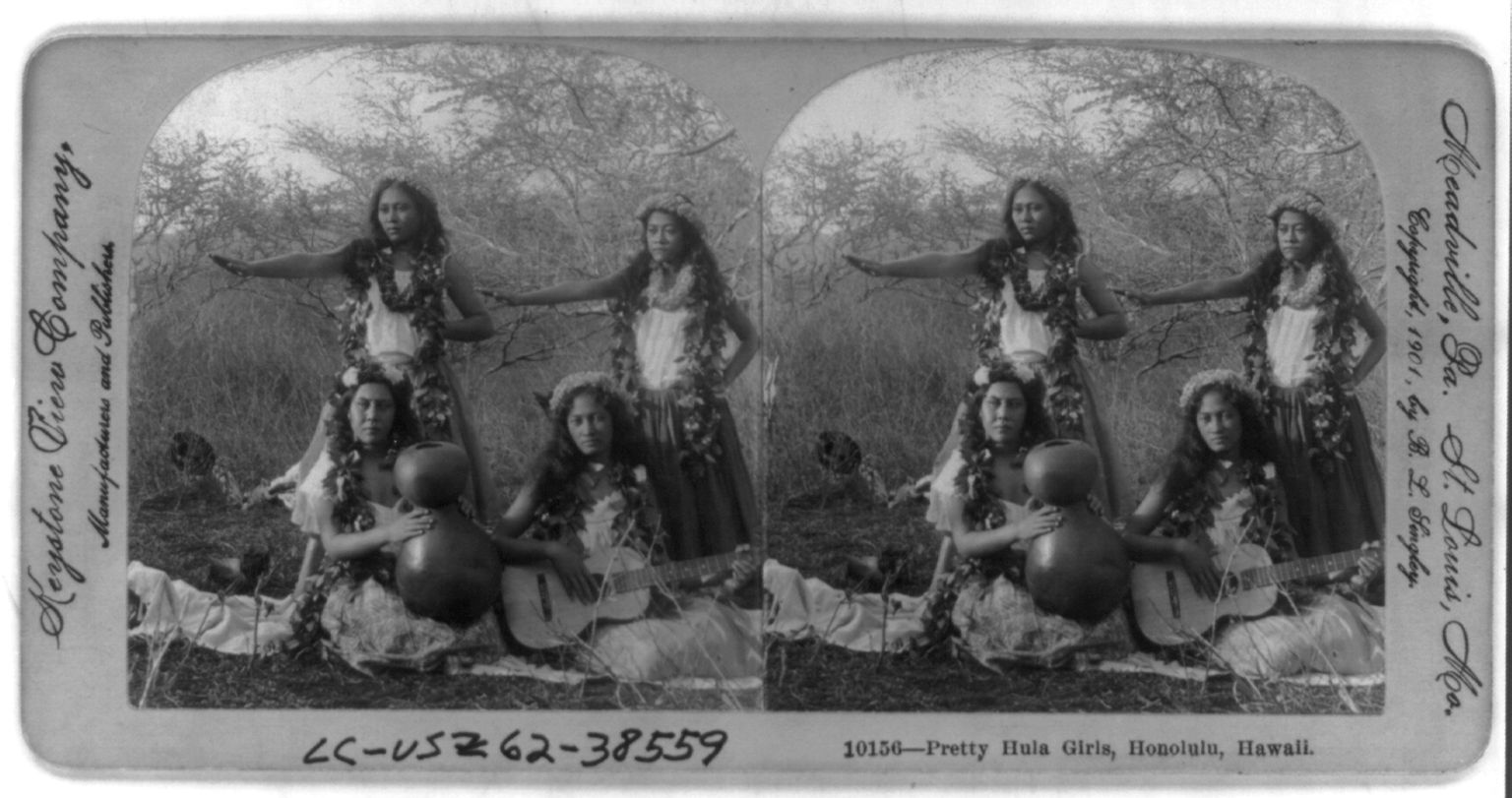Since last year we shared with you a bit about the history of wedding photography, we wanted to take a moment this year and share with you a bit about the history of photography itself! Jenny did a bit of this on her personal fine art Facebook and Instagram pages a month and a half ago, but we thought we'd go more in depth on here!
Daguerrotype
1839-1860
Daguerreotype 1839-1860: This type of photo is captured directly onto a copper plate with silver coating. The photo was developed with mercury gas and when you hold it and move it back and forth it replicates a mirror (which is the main way to identify an old plate as daguerreotype- you can only see the image itself from a certain angle. This type of image is referred to as a false positive). These images were some of the first readily available photographic portraits available to consumers and were often housed in small leather boxes surrounded by velvet behind UV resistant glass.
The boxes were multipurpose: They were gorgeous and a safe place to keep the cherished object, but also the (due to the fact that the image was created with silver) had to be sealed with a specific tape into the box so that the plate was air tight and would not tarnish. Ours here that do have a bit of tarnish have either lost their tape or are leaking. (There are easy ways to clean the plates and reseal the tape, so we have to do this to ours soon.) They are highly regarded for their remarkable details and image quality. Low light sensitivity ( an ISO of 1 or less) meant a long exposure time, often requiring a sitter to remain still for several minutes. EACH photo cost in today's money: between $81.50 and $195.
Talbotype/Calotype
1841
Talbotypes/ Calotypes: 1841: The photo was printed onto paper in England, but was NOT mass produced in the United States because it's creator Talbot tightly patented his process. The negative was made of waxed paper, so the photos themselves lack complete clarity and sharpness. Those in England, France, and probably Canada worked with paper processes from 1840-1860. Salt was used during the process and Calotypes included those created with paper negatives (with those created with glass negatives being referred to simply as "salt prints" (something we often call "albumen prints.") Albumen prints replaced the wax potion with an egg white based mixture, thus allowing for a more uniform and smooth surface. The improved photosensitive chemistry produced clearer images than the original Talbotypes. These prints are characterized by their brownish or sepia toning.
Ambrotype
1854-1860's
Ambrotypes: 1854-1860's: This photo is printed onto a glass plate. The photo was developed with chemicals on glass plates (often clear glass backed with black painted onto it). Ambrotypes can be created onto any color glass- if kept clear, the plate can be used as a "negative." Using darker colored glass removed the need to paint the back of clear plates black in order to see the image. In the late 1850s many began using different colors with Ruby being a clear favorite. Each photo cost somewhere between 25¢ to $2.50 which pans out to about $6 to $60 apiece which is still much cheaper than the $81.50 to $195 that daguerreotypes each cost.
These images were created via a wet process, requiring plates to be sensitized, shot, and developed immediately. This limitation made the creation of ambrotypes outside of a traditional photo studio difficult. Some photographers of this era created mobile darkrooms in order to capture life outside the confines of a brick and mortar studio.
Tintypes
1856-1930's
Tintypes (ferrotypes, melainotypes): 1856-1930s: This photo is printed onto iron and not tin like the name suggests. Like the previous 2 processes, the plate is cleaned, covered in chemicals, and developed with chemicals. Though the process The image looks a bit muddier than the daguerreotype and ambrotype due to the color of the metal and process. Each photo about 5¢ which is about $1 in today's money- much cheaper than either of the previous processes!
Tintypes are seen as the first affordable option for consumers of all wealth levels. These images were produced quickly and cheaply utilizing a cheap and durable metal substrate. The photosensitive chemicals use to sensitize the plates were slightly stronger than that of the daguerreotype and lessened the exposure times to seconds as opposed to minutes. The durability of these images makes them inexpensive and easy to find for a modern day collector.
Carte de visite
1859-late 1880's
Carte de Visite: 1859- late 1880s: The photos finally began to be printed onto paper (once again- thanks, Talbot and your Talbottypes!). The cards were thin and about 2.375 inches by 4 inches. Photos were sold for 25¢ - 50¢ apiece which is $3.82 to $7.64 in current money.
These cards were usually created in sheets of 4 or 8 poses, all shot onto a single sheet of sensitized paper. Special cameras were affixed with multiple lenses in order to make the taking of multiple images easy. This type of photo was often traded among friends and family as a way of documenting ones travels to new and exotic places. Carte de visite were also used as a means of collecting images of famous and important people of the time, not unlike today's baseball cards.
Cabinet Card
1866-1890's
Cabinet Card: 1866-1890s: The paper photo is now mounted on a card. The size is often 4.25 inches by 6.5 inches. Since photos are much cheaper than in the past, photographers figure out that selling in multiples is much more profitable to keep the business going. Photos went for $2 per dozen which is $51.10 per dozen in today's money (about $4.26 apiece in current currency).
These photos were an offshoot of the carte de visite craze. They are quite similar to the carte de visite, but were mounted to a larger, thicker, and sturdier backing. They often included more information on the location and studio at which the image was captured. This worked a dual purpose of showcasing ones travels as well as advertising for the studio itself. Due to the thickness and quality of the backing, these still exist in great quantity today.
Stereographs
1850's-1870's
Stereographs:1850-1870: Once there were mass-produced paper photos many forms of card photographs were created. It started with Boudoir, then carte de visite & cabinet cards followed, and then various styles such as imerial, panel, promenade, stereograph, and victoria followed. Stereographs are a card with two 2D images, that when viewed with a special viewer appear in 3D. These images were captured by taking two nearly identical images from a distance approximately equal to the distance between the average viewers eyes. These images were revolutionary for their time and were often used as teaching tools, as they allowed an image to show a subject with a realistic sense of depth.
Featured below are stereographs that display various landmarks, the moon, and a colorized medical stereograph used for teaching.
Thanks so much for tuning in this week to learn about the history of photography and its first renditions! The rest of this month during Weekly Wednesdays we'll be sharing more full weddings with ya as well as a belated birthday, so we just wanted to take a break for a quick lesson while we work on finishing up edits and products for 2 of our wedding couples' weddings! (We're likely off to Toledo and Detroit this coming weekend, so we may scratch next week's planned blog post to share photos from our Toledo & Detroit adventures if we feel we've taken any worthwhile photos to share.) Have a great rest of your week and catch ya next week!



